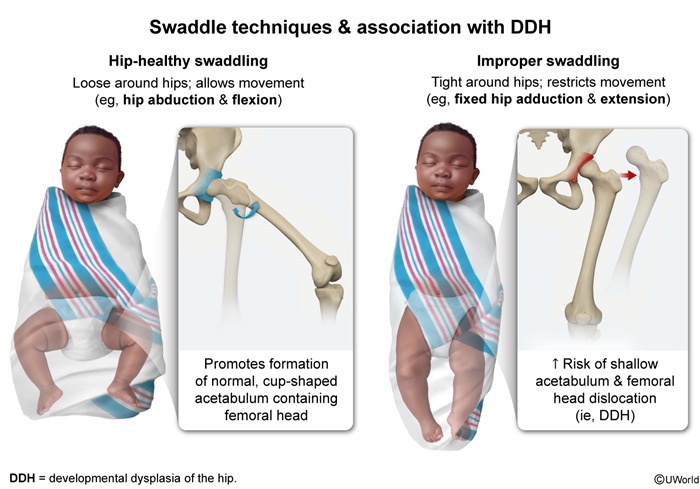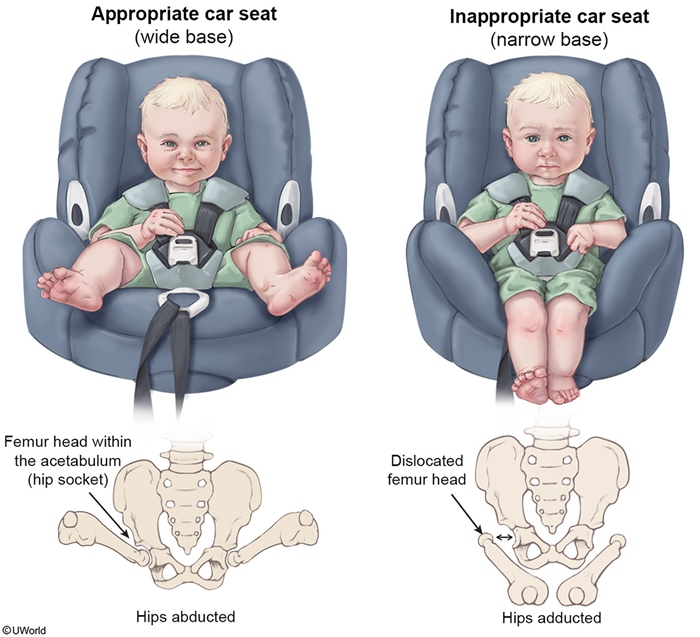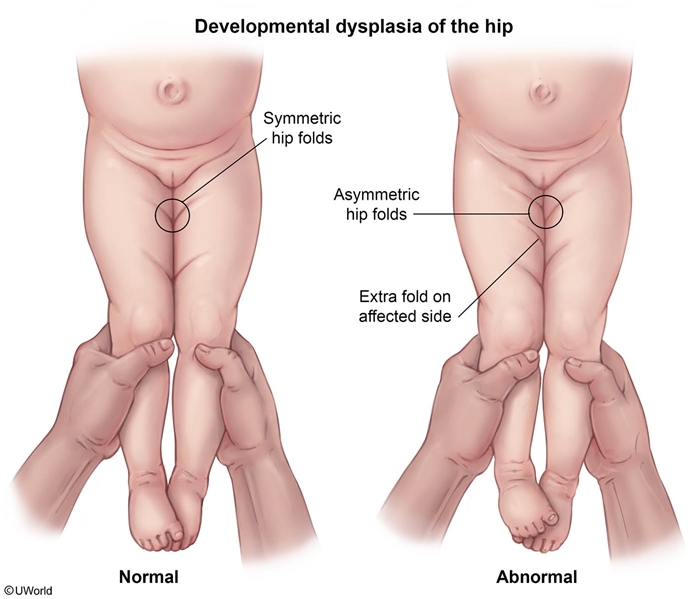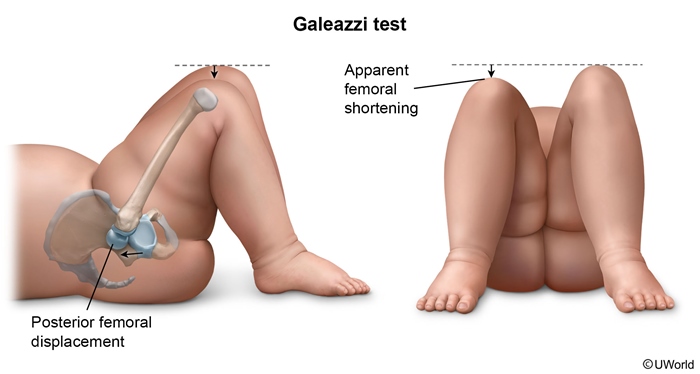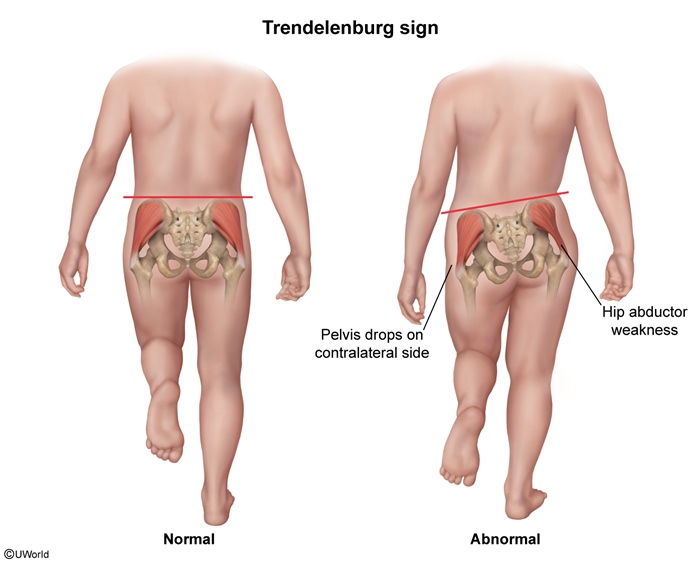Developmental Dysplasia Of The Hip
Article Sections
Introduction
Developmental dysplasia of the hip (DDH) encompasses a spectrum of conditions involving abnormal development of the hip joint in infants and children. It arises from abnormal contact between the acetabulum and proximal femur, disrupting development and resulting in instability of the hip joint.
Pathophysiology and risk factors
Proper hip joint development requires normal contact between the acetabulum and femoral head, which facilitates reciprocal induction (ie, the 2 interacting tissues are each inducers for the other's development). Disruption of this contact impedes normal hip development, resulting in a shallow hip socket and inadequate support of the femoral head. Risk factors include both mechanical forces and genetic factors.
Mechanical forces
- Before birth: Near the end of pregnancy, the femur's normal rapid growth results in the acetabular roof having limited coverage of the femoral head. Therefore, normal hip joint contact is easily disrupted by any mechanical force (eg, adduction) that directs the femoral head away from the central portion of the acetabulum. A common risk factor is breech positioning, which can accentuate this process by limiting fetal movement.
Continue Learning with UWorld
Get the full Developmental Dysplasia Of The Hip article plus rich visuals, real-world cases, and in-depth insights from medical experts, all available through the UWorld Medical Library.
Figures
